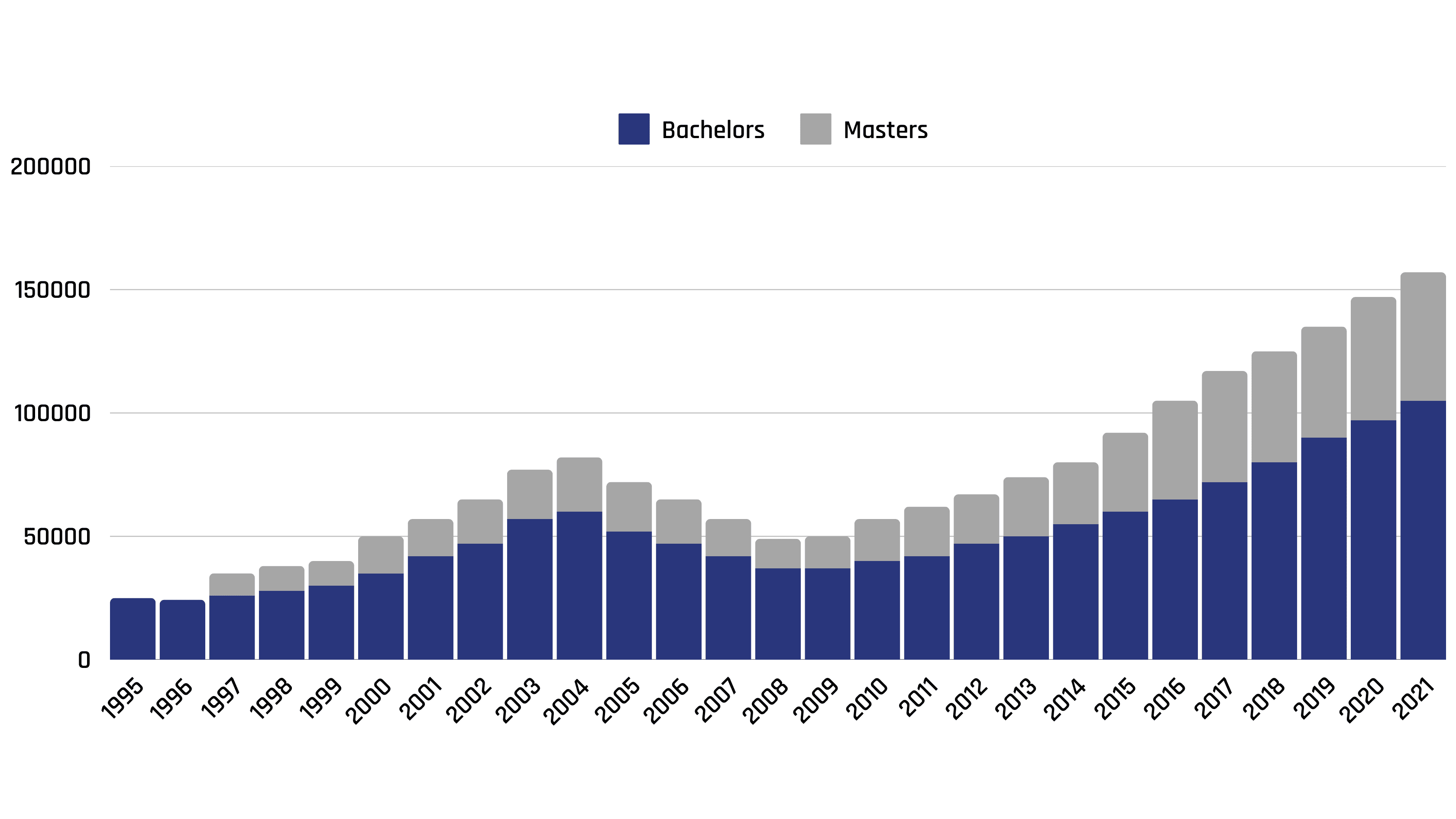Gen Z and the Workforce
Recruiting Generation Z for Careers in Construction
Here’s a stark fact: The United States needs more construction workers than it’s producing. And that need is only going to increase in the coming years.
According to the Associated Builders and Contractors, the industry will need to add nearly half a million new workers in 2025, over and above the current employment rate—to keep up with the demand. And that’s just one year. The need will persist in subsequent years.
Where will those new recruits come from? They won’t be middle-aged workers already ensconced in other careers. Younger people will have to fill that gap—those just now choosing their careers, and those who will soon reach working age. In other words, Generation Z, people born between 1997 and 2012, will provide the construction workforce of tomorrow.
Will enough of those young people see construction as a viable career choice? That’s an open question. But shifts in the labor market in recent years have made many reconsider their options.

Correcting a Misplaced Emphasis
For decades, public policy and mainstream culture have emphasized college education as the route to success for young people. Computer technology was seen as a prime source of new career opportunities, and aspiring students flocked to the cyber field. Beginning around 2010, the number of students seeking degrees in computer science began to climb dramatically. That trend continued and accelerated for the next 14 years:

Eventually, the supply of developers and other IT professionals was bound to exceed demand. Meanwhile, artificial intelligence, machine learning, and related technologies began automating many tasks, enabling companies to do more with fewer workers. The predictable result was a glut of IT professionals and a spate of layoffs:
- In 2023, Microsoft announced plans to lay off 10,000 workers.
- The data aggregator Crunchbase reports that 384 tech-based companies in the U.S. made staffing cuts in 2024, affecting 95,000 workers.
The appeal of IT as a career choice may have faded, but the outlook for many other professional fields is just as sobering: Hiring in professional and business services is at its lowest rate in 15 years.
How to Attract Gen Z to the Construction Workforce
Step 1: Address Doubts About College
Acknowledge that many Gen Z individuals are rethinking college due to high costs and poor job prospects.
Step 2: Emphasize Fast, Affordable Training
Highlight that construction offers quick, low-cost training programs and certifications.
Step 3: Compare Financial Advantages
Show that entry-level construction jobs often pay well compared to other industries — without student debt.
Step 4: Appeal to Work Preferences
Point out that many Gen Z workers prefer hands-on, active jobs over sitting at a desk.
Step 5: Highlight Career Potential
Promote opportunities for advancement, specialization, and meaningful, real-world work.
In summary, the construction field offers several attractive features for Gen Z:

Invigorating physical work that produces tangible results

The opportunity to learn skills that will always be in demand

Good pay for specialized positions

Flexible working conditions

Reliable employment for the foreseeable future

The Fast-Evolving Construction Industry
Some people are surprised to learn that working in construction involves more than swinging a hammer or operating a crane:
- High tech is now a permanent part of the building industry, as companies routinely utilize everything from artificial intelligence (AI) to digital twin technology.
- Construction companies also need architects, designers, estimators, accountants, engineers, recruiters, and project managers.
- The construction process itself requires people skilled in a multitude of specialized trades, including masons, carpenters, electricians, roofers, heavy equipment operators, iron workers, and more.
Meanwhile, the physical nature of construction makes it invulnerable to the incursions of AI in the building process itself. People who enter the field can be assured that real humans who know how to build things will always be in demand.
Young people who are environmentally minded will be pleased to learn that today’s construction processes are more sustainable and eco-friendly than ever before. It’s also worth noting that, contrary to the prevailing image, the field is open to people of all descriptions, including minorities and women.
Beyond these benefits, there is something satisfying about seeing the work of one’s hands realized in a strong, permanent structure that can serve people for years into the future.
If the industry as a whole can convey these many benefits to the broader public, more young people will come to view the construction field as an attractive option. And the construction trade will continue meeting the nation’s growing building needs.


